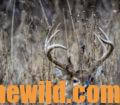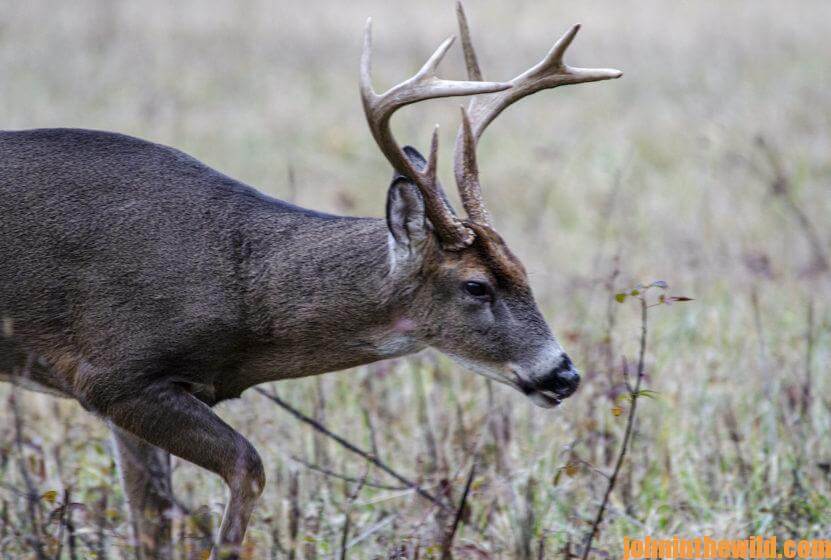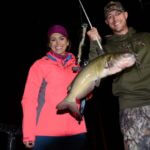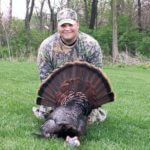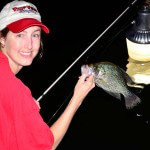Editor’s Note: Reading a deer’s body language will tell you when to draw, where to aim and what to anticipate will happen when you release the arrow. The deer’s body language also will tell you what type of shot to expect. More deer are bagged with bows and arrows by those who take the time to assess the deer’s mood and read the deer’s body language than by those who disregard what the animal is expressing, or what behavior the deer is demonstrating as he comes in for the shot. So, learn to read the deer’s body language and to anticipate the deer’s movements. You will shoot more accurately, bag more bucks and go home with more trophies.
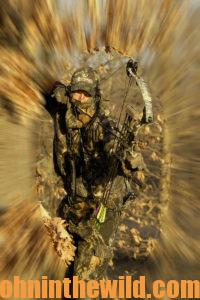 The arrow hit the ground with a resounding thud that echoed through the swamp. Immediately, the 4-point buck jumped backwards like a coiled spring released after being compressed. As quickly as the deer jumped, I pulled another arrow from my quiver and nocked it to prepare for the next shot, while watching the white tail of the buck flagging away from me.
The arrow hit the ground with a resounding thud that echoed through the swamp. Immediately, the 4-point buck jumped backwards like a coiled spring released after being compressed. As quickly as the deer jumped, I pulled another arrow from my quiver and nocked it to prepare for the next shot, while watching the white tail of the buck flagging away from me.
The buck only ran about 20 yards before stopping. Since I had my arrow nocked, I could study the animal. His head was up, and he was looking around but not up into the tree where I was. As the buck studied the forest floor, he spotted the arrow sticking-up in the ground with its white fletchings that almost seemed to glow like neon. The deer’s head went up and down as he visually examined the arrow. He stuck his neck straight out, attempting to test the wind to see if any trace of odor remained that might let him know what had caused the crashing sound under his belly. When the buck could pinpoint no danger, slowly and carefully, one foot at a time, he walked back toward the arrow. Every five or six steps, he stopped to look around, to stick his neck out and to test the air as he continued to walk slowly and deliberately to where I was. The buck had been at 20 yards when I released the arrow. Now he stood broadside at 30 yards, still studying the arrow.
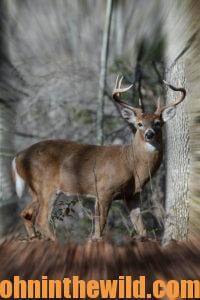 I started my draw. As the buck approached the arrow, he stretched out his neck, trying to smell the shaft without actually getting too close to it. Finally when the deer was about 5 feet from the arrow with his neck extended, I let my sight pin come to rest just behind and a little low on the buck’s front shoulder. I released cleanly and saw the white fletchings fly straight for and then disappear into the side of the buck. The deer bolted and ran for about 20 yards before vanishing into a cane thicket. I listened as he crashed through the cane. Then there was silence and next a low thud. As I waited to recover my animal, I thought about how the deer had approached and why I had gotten a second shot.
I started my draw. As the buck approached the arrow, he stretched out his neck, trying to smell the shaft without actually getting too close to it. Finally when the deer was about 5 feet from the arrow with his neck extended, I let my sight pin come to rest just behind and a little low on the buck’s front shoulder. I released cleanly and saw the white fletchings fly straight for and then disappear into the side of the buck. The deer bolted and ran for about 20 yards before vanishing into a cane thicket. I listened as he crashed through the cane. Then there was silence and next a low thud. As I waited to recover my animal, I thought about how the deer had approached and why I had gotten a second shot.
The buck had come into the white oak acorns to feed – very calmly and never suspecting danger. I was hunting in an area with little or no hunting pressure. This buck was a 2-1/2-year-old deer that probably never had seen an archer before. When I released the first arrow, the deer instinctively jumped away from it. Although I would like to say the deer jumped the string, the truth was I missed him. But because the deer had felt very-little hunting pressure, he was more curious than frightened. Also since he had been calm when I shot, I assumed I might be able to get off a second shot if I missed the first one.
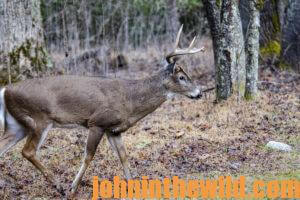 If you can read the body language of deer, often you can anticipate that second shot and prepare for it if you miss your first shot. Understanding a buck’s body language is a critical ingredient for successful bowhunting. Knowing the emotional level of the deer will tell you if you should shoot, what shot you should take, whether or not you’ll get a second shot, and how much you’ll be able to move on your tree stand. Many times we fail to connect with bucks because we hurry our shots, believing if we don’t shoot when any shot is presented, we won’t be able to take a shot. However, if we analyze the body language of the deer, often we can wait for a better shot or the best shot.
If you can read the body language of deer, often you can anticipate that second shot and prepare for it if you miss your first shot. Understanding a buck’s body language is a critical ingredient for successful bowhunting. Knowing the emotional level of the deer will tell you if you should shoot, what shot you should take, whether or not you’ll get a second shot, and how much you’ll be able to move on your tree stand. Many times we fail to connect with bucks because we hurry our shots, believing if we don’t shoot when any shot is presented, we won’t be able to take a shot. However, if we analyze the body language of the deer, often we can wait for a better shot or the best shot.
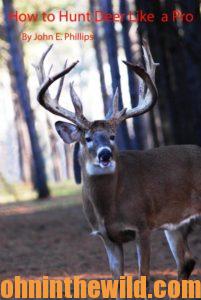 To learn more about hunting deer, check out John E. Phillips’ book, “How to Hunt Deer Like a Pro,” available in Kindle, print and Audible versions, at http://amzn.to/YpoQHA. You may have to copy and paste this link into your browser. (When you click on this book, notice on the left where Amazon says you can read 10% of the book for free, and you can hear 10% for free).
To learn more about hunting deer, check out John E. Phillips’ book, “How to Hunt Deer Like a Pro,” available in Kindle, print and Audible versions, at http://amzn.to/YpoQHA. You may have to copy and paste this link into your browser. (When you click on this book, notice on the left where Amazon says you can read 10% of the book for free, and you can hear 10% for free).
On the right side of the page and below the offer for a free Audible trial, you can click on Buy the Audible book. To see more of John’s deer books, visit www.amazon.com/author/johnephillips.
Tomorrow: Understanding a Deer’s Moods


